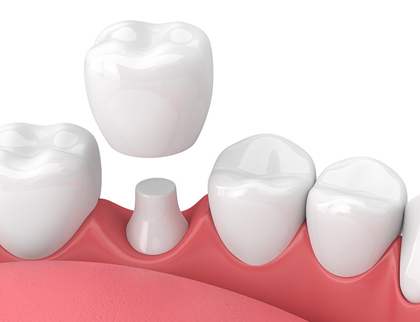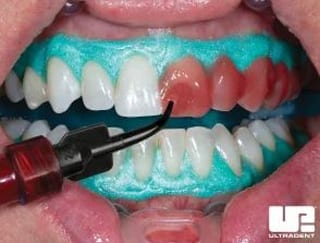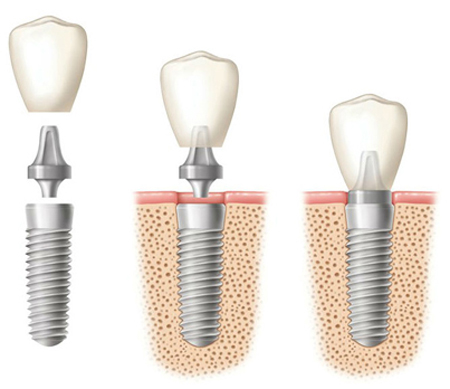My new crown has been hurting for months
In January, my dentist put a crown over a top left molar that was cracked, sensitive, and had an old silver filling in it. During the procedure, my dentist had trouble getting the tooth numb, so drilling it was quite painful. When the dentist checked my bite, I told her that it hurt to chew on that side. Later during the week, I told the dentist that it was also painful to brush the tooth and floss around it. She never mentioned that I might need root canal treatment.
The dental office told me that the tooth was irritated and would settle down. I return to the office, and my dentist adjusted the crown. She said that if it did not feel better, she would readjust. I delayed the appointment due to the pandemic, but my tooth became quite painful in a few weeks. My dentist adjusted the crown again, and although it was somewhat better, it was still uncomfortable.
Last week when I saw the dentist, she said the tooth has a periapical abscess, and I need an extraction. My dentist has no explanation of why she didn’t see that the tooth was declining during my follow-up visits. How can I request a refund for the same-day crown? And is the same-day crown process the reason I had so many problems? – Thank you. Quinn from Indiana
Quinn,
Thank you for your inquiry.
Based on your description, it sounds like your dentist was somewhat negligent for several reasons:
- Cracked tooth – Your molar tooth was already cracked and at risk of needing root canal treatment. Your dentist should have mentioned the possibility of needing root canal treatment.
- Sensitivity – Some sensitivity after crown placement is common, but the pain you experienced was abnormal.
- Your bite – When your dentist checked your bite, she should have worked to get it right. A crown should blend with your bite so well that you cannot tell the difference between it and your natural teeth.
Requesting a Refund for a Dental Crown
You can request a refund for your crown for several reasons:
- Your dentist did not explain that you might need root canal treatment
- Your dentist placed the crown on a sensitive tooth without addressing the sensitivity
- The same-day crown does not function well and did not function properly when your dentist first checked your bite
- Your dentist did not attempt to treat the tooth despite your complaints further
Several ways to motivate your dentist to refund you include:
- Report the issue to your dental insurance company, if applicable
- File a complaint with the state dental board
- Leave negative online reviews
Consider Root Canal Treatment from a Specialist

Root canal treatment on a tooth with a periapical abscess is worth a try. It may save your tooth—especially if you allow an endodontist, a root canal specialist, to treat it. If there is a chance of saving your tooth, why not consider it? Otherwise, after an extraction, you will need a dental implant or bridge to replace the missing tooth.
Without an implant or a bridge to replace your extracted tooth, you can experience some or all these issues:
- Your adjacent teeth and the tooth opposing the missing one will drift into the space
- You will begin to experience TMJ issues
- Tooth movement can create a need for orthodontic treatment
Get a Second Opinion
We recommend that you get a second opinion from an experienced dentist. A conscientious dentist wants to preserve your teeth and your oral health. Request an examination, discuss your treatment options, and weigh the pros and cons of tooth extraction.
Timothy J. Goebel, DDS, a Moline, IL dentist, sponsors this post.
Why would I need veneers, Invisalign, and teeth whitening?
I moved to the area in 2019, and I have seen two dentists. Neither of them impressed me enough to become a regular patient. In January, I received a postcard from a dentist whose office is between my job and home. I gave her a try because I am interested in porcelain veneers. She talked briefly about veneers but said she would first whiten my teeth with Zoom, recommend Invisalign, and finally finish my teeth off with veneers. I did not ask for teeth whitening or Invisalign. Then she said something about reducing the cost by $500 if I agreed to all the services. Are all those treatments necessary? Porcelain veneers alone cost enough! Or are dentists selling package deals now? I feel like I should be disgusted about an attempt to upsell and trick me. – Thank you. Teal from Ohio
Teal,
Thank you for your inquiry. We understand why you feel that your dental visit was cluttered with sales talk.
Teeth Whitening Before Veneers
A cosmetic dentist might recommend bleaching your teeth before placing veneers for these reasons:
- Porcelain is colorfast – It is impossible to whiten porcelain veneers, so whitening must be completed first if you want to brighten your smile.
- A ceramist makes veneers match your tooth color – A cosmetic dentist takes pictures of your teeth and gives a ceramist instructions to create veneers that match your tooth shade. If you whiten your teeth after receiving your veneers, your teeth will be whiter than the veneers.
Bleaching is not a requirement – But whitening your teeth with Zoom or any other whitening system is not required to receive veneers, and neither is Invisalign a requirement.
Invisalign, Porcelain Veneers, or Both?

Depending on the alignment of your teeth, orthodontic treatment may provide better results than porcelain veneers, but you did not mention why your dentist recommends Invisalign. Cosmetic dentists often use porcelain veneers to make slightly crooked teeth look perfectly straight. And they do it without Invisalign.
Schedule a Cosmetic Dentistry Consultation
Without Dr. Goebel examining your teeth, we will not speculate about the reasons for the dentist’s recommendations. So we suggest that you schedule a consultation with a dentist who has advanced cosmetic dentistry training. Talk with the dentist about each issue that concerns you. He or she will explain your treatment options and the results you can expect. No dentist should pressure you to receive treatment of any kind.
Thomas J. Goebel, DDS of Moline, IL, sponsors this post.
Dentist placed my implant in shallow bone, and it failed
After implant surgery, my dentist said that he placed the implant, but my bone was shallower than he expected. After three months, he now says that the implant will not heal, so he wants to remove it. My dentist offers a dental bridge instead. I spent $3200 on dental implant failure. I told my dentist that I am not interested in a bridge. Will you please give me suggestions on how to get my money back and get a new implant? Should I let my dentist remove the implant? – Thank you. Marlon from Iowa
Marlon,
Your dentist failed you legally and in the care he provided. Your implant will not function, so he owes you a refund. So you can promptly ask for one, and it should not take much explanation. We will offer suggestions later in this post.
Placing a Dental Implant in Shallow Bone

A dentist can avoid placing a dental implant in the shallow bone. Before implant placement, a skilled dentist plans for it. Three-dimensional x-rays are a must to reveal your bone volume and orofacial anatomy. While using 3-D guided navigation, a dentist can precisely place your implant for maximum support and a dental crown that fits well.
It seems that your dentist failed to do adequate x-rays. And during surgery, he placed the implant knowing your bone level is shallow.
Dental Bridge vs. Implant
- Dental implant – If you want a dental implant and you have low bone volume, a skilled dentist or oral surgeon can build your bone with grafting. After the graft heals, your dentist can place the implant. But a dentist must extract your current implant first and allow the area to heal.
- Dental bridge – A dental bridge requires grinding down the healthy teeth on either side of the missing one. After the teeth are shaved down, the ends of a dental bridge will fit over them. And those teeth will anchor the bridge.
Getting a Refund for a Dental Implant
You can get a refund for a failed dental implant with these steps:
- Ask your new implant dentist to help you get a refund
- Tell your current dentist that you are willing to report the issue to the state dental board
- If your insurance company partially paid for any of your implant services, report the issue to them
- Hire an attorney
- Demand that your dentist pays for the cost of your new treatment.
Although your dentist gets credit for not continuing with the process and attaching a crown to your implant, he still owes you a refund. And an apology would help, too.
It Is Time to Switch Dentists
Look for dentists with post-graduate implantology (dental implant) training. Schedule at least two consultations to discuss and compare your options.
Thomas J. Goebel, DDS of Moline, IL, sponsors this post.
